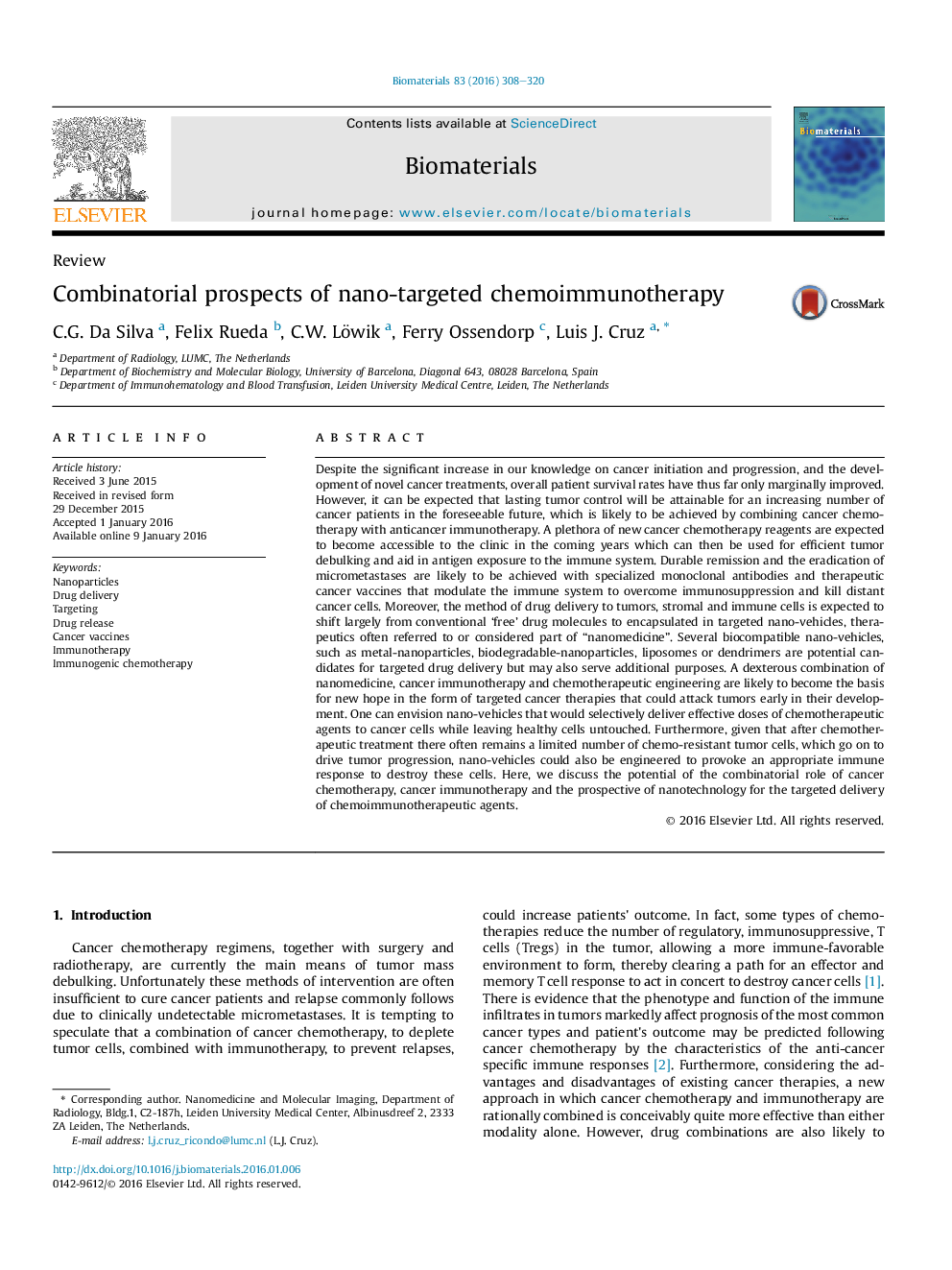| Article ID | Journal | Published Year | Pages | File Type |
|---|---|---|---|---|
| 6485142 | Biomaterials | 2016 | 13 Pages |
Abstract
Despite the significant increase in our knowledge on cancer initiation and progression, and the development of novel cancer treatments, overall patient survival rates have thus far only marginally improved. However, it can be expected that lasting tumor control will be attainable for an increasing number of cancer patients in the foreseeable future, which is likely to be achieved by combining cancer chemotherapy with anticancer immunotherapy. A plethora of new cancer chemotherapy reagents are expected to become accessible to the clinic in the coming years which can then be used for efficient tumor debulking and aid in antigen exposure to the immune system. Durable remission and the eradication of micrometastases are likely to be achieved with specialized monoclonal antibodies and therapeutic cancer vaccines that modulate the immune system to overcome immunosuppression and kill distant cancer cells. Moreover, the method of drug delivery to tumors, stromal and immune cells is expected to shift largely from conventional 'free' drug molecules to encapsulated in targeted nano-vehicles, therapeutics often referred to or considered part of “nanomedicine”. Several biocompatible nano-vehicles, such as metal-nanoparticles, biodegradable-nanoparticles, liposomes or dendrimers are potential candidates for targeted drug delivery but may also serve additional purposes. A dexterous combination of nanomedicine, cancer immunotherapy and chemotherapeutic engineering are likely to become the basis for new hope in the form of targeted cancer therapies that could attack tumors early in their development. One can envision nano-vehicles that would selectively deliver effective doses of chemotherapeutic agents to cancer cells while leaving healthy cells untouched. Furthermore, given that after chemotherapeutic treatment there often remains a limited number of chemo-resistant tumor cells, which go on to drive tumor progression, nano-vehicles could also be engineered to provoke an appropriate immune response to destroy these cells. Here, we discuss the potential of the combinatorial role of cancer chemotherapy, cancer immunotherapy and the prospective of nanotechnology for the targeted delivery of chemoimmunotherapeutic agents.
Related Topics
Physical Sciences and Engineering
Chemical Engineering
Bioengineering
Authors
C.G. Da Silva, Felix Rueda, C.W. Löwik, Ferry Ossendorp, Luis J. Cruz,
